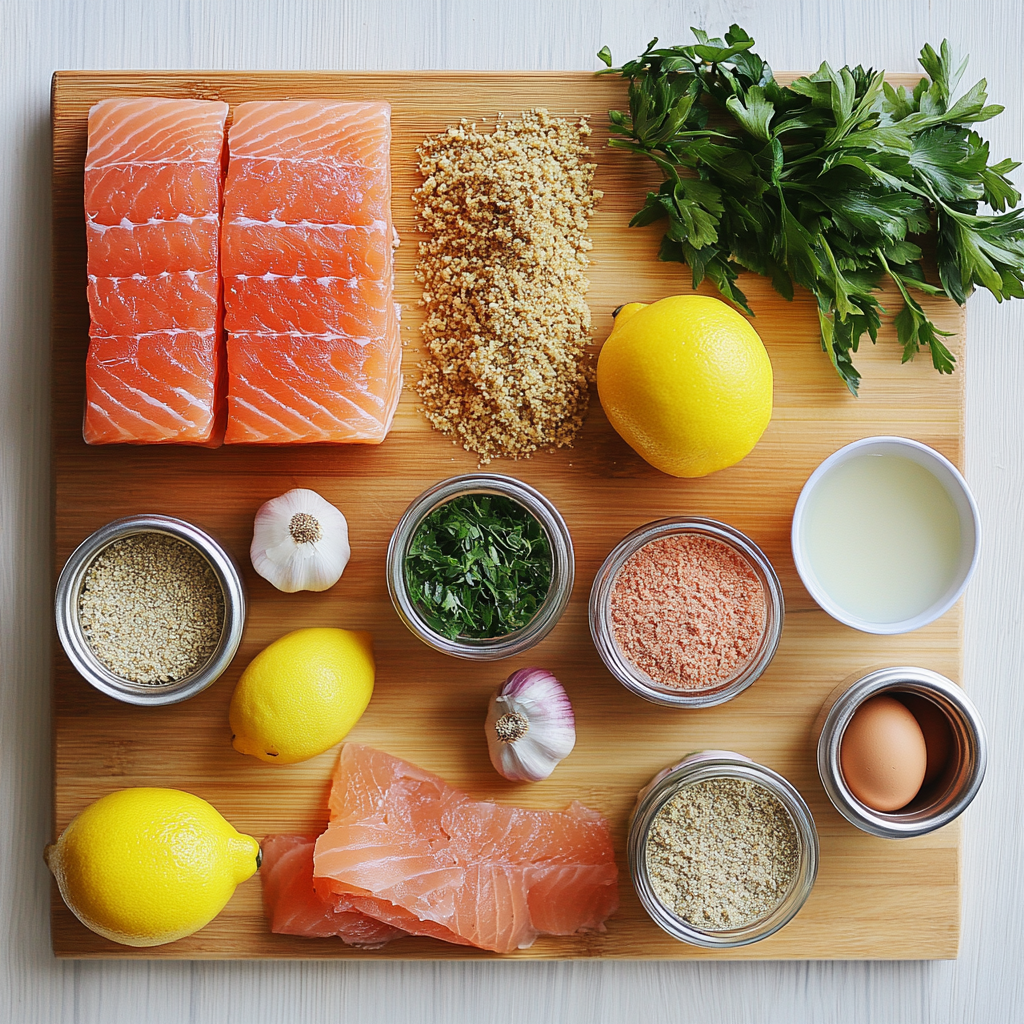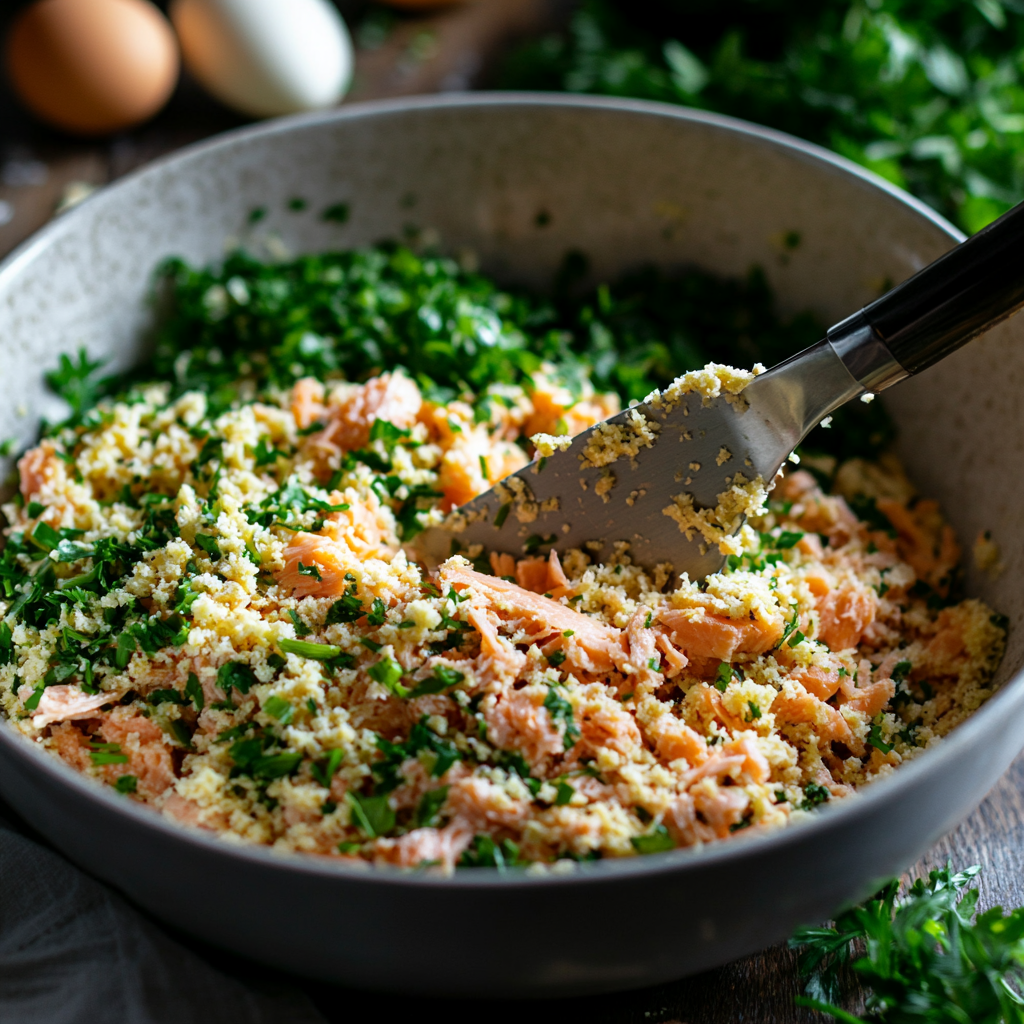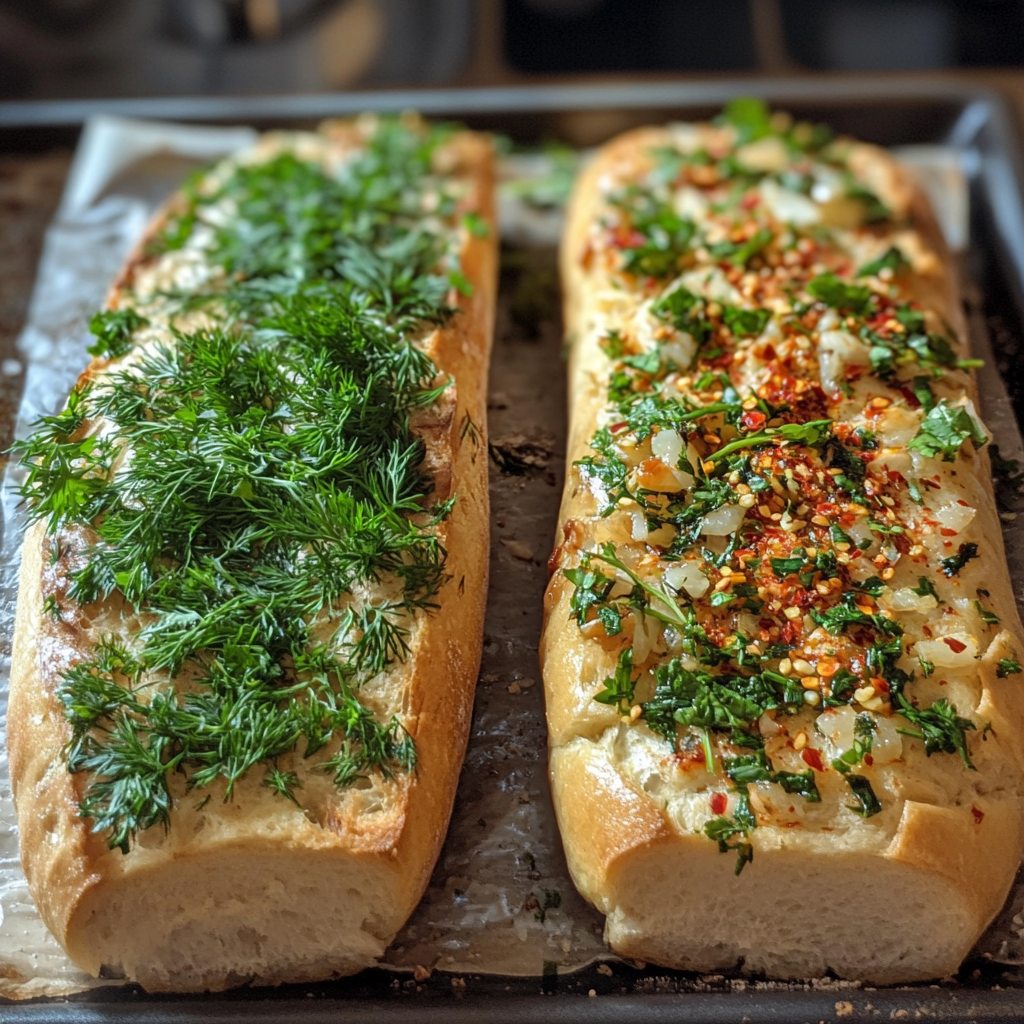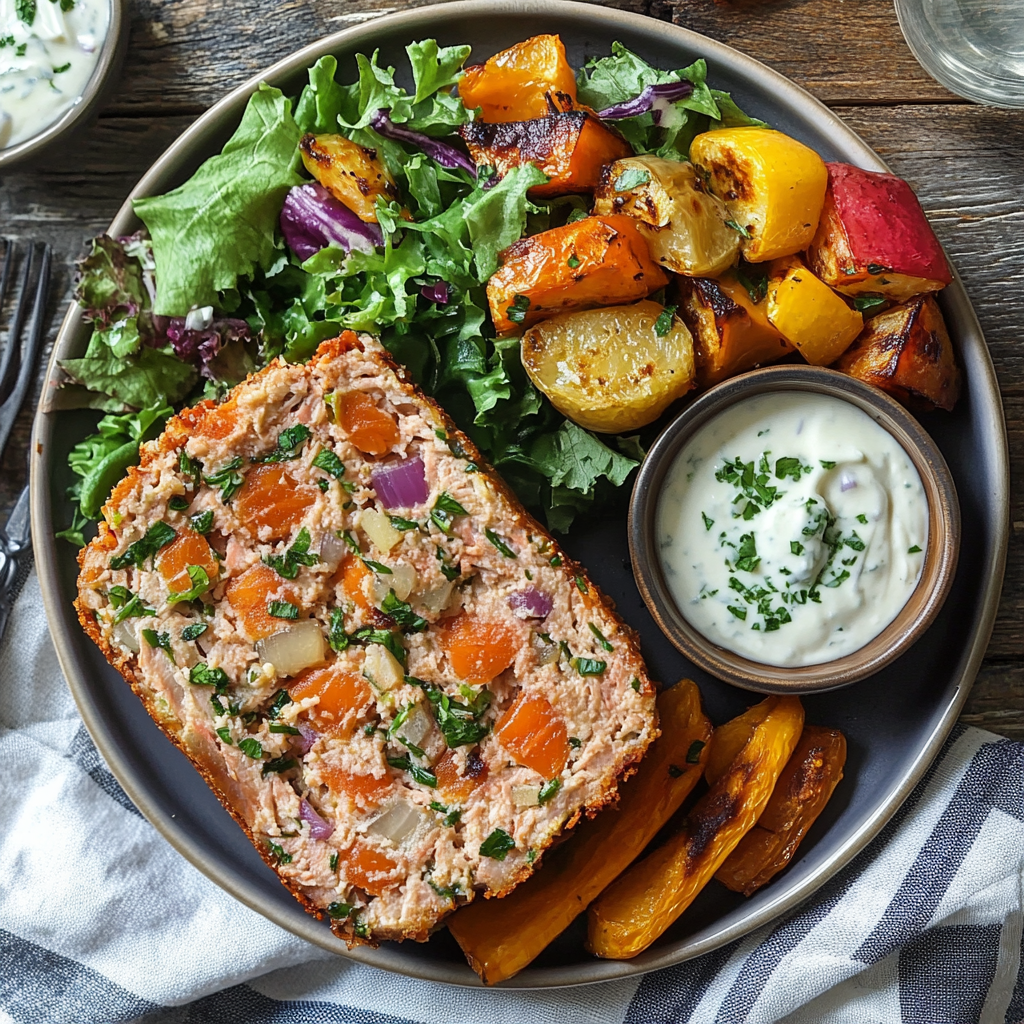Can Tuna and Salmon Be Used in the Same Loaf Recipe
Tuna and salmon may seem like unlikely companions in a single recipe, but their complementary flavors and nutritional profiles make them a perfect match in this hearty loaf recipe. Combining these two versatile fish results in a dish that is not only delicious and nutritious but also easy to prepare, making it an ideal option for busy weeknights, meal prep, or a special weekend dinner. Packed with omega-3 fatty acids, lean protein, and essential vitamins, a tuna and salmon loaf can be a centerpiece for a balanced diet.
The beauty of this recipe is its adaptability. Whether you’re preparing it as a protein-packed meal for the whole family, looking for something gluten-free, or catering to pescatarian friends, the recipe offers flexibility in ingredients and preparation methods. Plus, it’s simple enough for novice cooks while also allowing for creative spins for the more experienced.
If you’re looking to boost your intake of nutrient-rich fish, this tuna and salmon loaf combines the best of both worlds. Salmon offers a rich, buttery flavor, while tuna provides a lean, light texture that balances the loaf beautifully. Together, they create a meal that’s not only hearty and satisfying but also full of nutritional benefits.

Ingredients Overview
Before diving into the recipe, let’s break down the key ingredients. Each plays an essential role in creating a flavorful and healthy tuna and salmon loaf, but the recipe is flexible enough to accommodate substitutions for dietary preferences such as gluten-free, dairy-free, or low-carb.
Essential Ingredients:
- 1 can of tuna: Tuna brings a light, flaky texture to the loaf, and canned tuna is convenient, affordable, and rich in protein. Opt for tuna packed in water for a lighter version or tuna in olive oil for a richer flavor.
- 1 can of salmon: Canned salmon offers a different flavor dimension. It’s rich in omega-3 fatty acids and vitamin D, and also contributes to the structure of the loaf. Choose skinless and boneless canned salmon for ease.
- 2 large eggs: Eggs act as the binder for the loaf, helping hold all the ingredients together. If you’re following a vegan or egg-free diet, you can substitute flax or chia eggs (1 tablespoon of flax/chia seeds mixed with 2.5 tablespoons of water per egg).
- 1/2 cup breadcrumbs: Breadcrumbs provide structure and help absorb moisture. Use regular, panko, or gluten-free breadcrumbs, or try almond flour for a low-carb version.
- 1/4 cup lemon juice: The acidity of lemon juice adds brightness and complements the richness of the fish. It also helps to keep the loaf moist while enhancing flavor.
- 1 teaspoon garlic powder: A must-have for boosting flavor. You can substitute with fresh minced garlic for a stronger punch.
- Salt and pepper to taste: Seasoning is key to elevating the flavors of the fish. Adjust according to your preferences.

Optional Add-ins:
- Fresh herbs (like dill, parsley, or cilantro): Herbs bring a fresh, vibrant flavor that pairs perfectly with fish. Dill, in particular, is a traditional complement to salmon.
- Chopped onion: Adds texture and a subtle sweetness to the loaf. If you prefer, you can sauté the onions before adding them to mellow the flavor.
- Parmesan cheese: If you’re not following a dairy-free diet, adding 1/4 cup of grated Parmesan can enhance the richness of the loaf. You can substitute with nutritional yeast for a dairy-free version.
Looking for more recipes that complement this dish? Visit our Snacks section, where you’ll find healthy sides and light meals to pair with your tuna and salmon loaf.
Tools Needed
The beauty of this recipe lies in its simplicity. You won’t need any fancy gadgets, and most of the required tools are kitchen basics. Here’s what you’ll need to prepare your tuna and salmon loaf.
Essential Tools:
- Large bowl: You’ll need this for mixing all the ingredients together. A medium bowl could work as well, but a larger one ensures enough space to combine everything without spilling.
- Loaf pan: A standard 9×5 inch loaf pan works best, but you can also use smaller pans or even muffin tins if you want individual servings or mini loaves. Be sure to grease the pan to prevent sticking.
- Measuring cups and spoons: Accurate measurements are key to ensuring that your loaf comes out with the right consistency.
- Spatula or wooden spoon: You’ll need this to mix the ingredients thoroughly but gently, ensuring everything is combined without overmixing.
- Oven: Since the loaf will bake at 350°F (175°C), make sure your oven is preheated and at the correct temperature before you start baking.

For more recipes that use basic kitchen tools like these, head over to our Dinner section for inspiration.
Step-by-Step Instructions
Whether you’re a beginner in the kitchen or an experienced cook, this tuna and salmon loaf recipe is easy to follow. Below is a detailed step-by-step guide to ensure your loaf turns out perfectly.
Step 1: Preheat the Oven
Start by preheating the oven to 350°F (175°C). Preheating ensures that the loaf bakes evenly, resulting in a perfectly golden-brown crust. If your oven tends to run hot or cold, it’s a good idea to use an oven thermometer to ensure accuracy.
Step 2: Prepare the Ingredients
In a large bowl, combine the drained tuna and salmon. Use a fork to break up the fish into smaller pieces, making sure there are no large chunks. The fish should be flaky but not completely mashed. Then, add the eggs, breadcrumbs, lemon juice, and garlic powder. Mix gently until all ingredients are well incorporated.
If you’re adding optional ingredients like fresh herbs, Parmesan, or onions, this is the time to stir them into the mixture. Remember not to overmix—the key is to combine the ingredients while still maintaining the texture of the fish.
Step 3: Transfer to a Loaf Pan
Lightly grease your loaf pan with oil or cooking spray. This step is essential to prevent the loaf from sticking. Once greased, pour the mixture into the pan and use a spatula to smooth the top. Make sure the surface is even so the loaf bakes uniformly.
Step 4: Bake Until Golden Brown
Place the loaf in the oven and bake for 45-50 minutes or until the top is golden brown. Depending on your oven and pan size, the cooking time may vary slightly. To check for doneness, insert a toothpick or skewer into the center of the loaf—if it comes out clean or with minimal crumbs, the loaf is ready.
Step 5: Let the Loaf Cool
Once baked, remove the loaf from the oven and let it cool in the pan for about 10 minutes. This helps the loaf set and makes it easier to slice. After 10 minutes, carefully lift the loaf from the pan and transfer it to a wire rack to cool completely.
Allowing the loaf to cool fully is essential if you plan to slice it for meal prep or sandwiches, as it will hold its shape better.
Looking for more beginner-friendly baking techniques? Check out our Breakfast section for easy recipes that use similar methods.
Flavor Variations
One of the best things about this tuna and salmon loaf is its versatility. You can easily switch up the flavors, add different ingredients, or even adjust the recipe to fit specific diets. Here are a few variations to try.

Herb and Spice Variations
- Herb-Infused Loaf: Add 1-2 tablespoons of finely chopped fresh herbs like dill, parsley, or chives. Dill works particularly well with both tuna and salmon, giving the loaf a fresh, clean flavor.
- Spicy Loaf: If you enjoy heat, add 1/2 teaspoon of crushed red pepper flakes or a dash of cayenne pepper to the mixture. You can also serve the loaf with a spicy dipping sauce or sriracha on the side.
- Citrus Zest: For a bright and zesty loaf, grate the zest of one lemon or lime into the mixture. Citrus zest enhances the natural flavors of the fish and adds a burst of freshness.
Low-Carb and Gluten-Free Options
- Low-Carb Loaf: Replace the breadcrumbs with almond flour or crushed pork rinds. Almond flour will help keep the loaf together while providing a nutty flavor. Pork rinds are also a great keto-friendly substitute.
- Gluten-Free Loaf: For those avoiding gluten, use gluten-free breadcrumbs or even crushed gluten-free crackers. These alternatives still give the loaf the structure it needs without the gluten.
Dairy-Free and Vegan Substitutes
- For a dairy-free loaf, omit the Parmesan cheese and use nutritional yeast instead. Nutritional yeast adds a cheesy, umami flavor without the dairy.
- To make the loaf vegan, replace the eggs with flax or chia eggs. For each egg, mix 1 tablespoon of ground flax or chia seeds with 2.5 tablespoons of water and let sit for 5 minutes to thicken. You can also use plant-based tuna and salmon alternatives now widely available at health food stores.
For more creative twists on classic dishes, visit our Snacks section, where you can find complementary side dishes and ideas for this loaf.
Expert Tips for Success
While this recipe is easy to follow, there are a few tips that can help ensure your tuna and salmon loaf turns out perfectly every time.
Tip 1: Keep It Moist
One of the most common problems with fish-based loaves is dryness. To avoid this, make sure you drain the canned tuna and salmon well but don’t press out every bit of moisture. Adding ingredients like lemon juice and eggs helps maintain moisture, and avoiding overcooking the loaf is key.
Tip 2: Don’t Overmix the Ingredients
When mixing the ingredients in the large bowl, be gentle. Overmixing can result in a dense, tough loaf. Aim to combine the ingredients just enough to distribute them evenly while still maintaining the flaky texture of the fish.
Tip 3: Use Fresh Ingredients
Whenever possible, use fresh lemon juice, herbs, and high-quality fish. Fresh ingredients will elevate the flavor of the loaf, making it more vibrant and delicious. If you’re using canned fish, opt for high-quality brands that use sustainable practices and offer fish packed in water or olive oil.
Tip 4: Check the Oven Temperature
Baking the loaf at 350°F (175°C) ensures that it cooks through without burning. If your oven tends to run hot, consider lowering the temperature slightly or checking the loaf a few minutes before the recommended baking time.
For more expert cooking advice, explore our Dinner section, where we share tips on achieving perfect results in savory dishes.
Nutritional Information and Health Benefits
One of the standout qualities of this tuna and salmon loaf is its impressive nutritional profile. Combining tuna and salmon gives you a meal packed with protein, omega-3 fatty acids, and essential vitamins, making it a great choice for those looking to maintain a healthy diet.
Nutritional Breakdown (Per Serving):
- Calories: Each slice of the loaf contains approximately 250-300 calories, depending on the portion size and any additional ingredients (such as cheese or extra oil).
- Protein: Tuna and salmon are both rich in protein, providing around 20 grams of protein per serving. Protein is essential for muscle repair, immune function, and overall health.
- Omega-3 Fatty Acids: One of the primary health benefits of this dish comes from the high levels of omega-3 fatty acids in both fish. Omega-3s are known to support heart health, reduce inflammation, and improve brain function. Salmon, in particular, is one of the best sources of omega-3s.
- Vitamin D: Salmon is also a great source of vitamin D, which is important for bone health, immune support, and overall wellbeing.
- B Vitamins: Both tuna and salmon contain significant amounts of B vitamins, including B12, which plays a key role in energy production and maintaining a healthy metabolism.
By combining these two powerhouse fish, you’re getting a nutrient-dense meal that supports a variety of health goals. To explore more about the specific health benefits of fish and omega-3s, visit authoritative health blogs.
Serving Suggestions
This tuna and salmon loaf is a versatile dish that can be served warm or cold, making it suitable for different occasions. Here are a few serving suggestions to help you create a well-rounded meal.
Side Dishes:
- Roasted Vegetables: Serve the loaf with roasted vegetables like Brussels sprouts, carrots, or sweet potatoes. The earthy sweetness of the vegetables complements the richness of the loaf.
- Salad: A fresh green salad with mixed greens, cucumber, cherry tomatoes, and a light vinaigrette provides a refreshing contrast to the loaf’s rich, savory flavors.
- Grain-Based Sides: If you’re looking for something heartier, consider pairing the loaf with a side of quinoa, brown rice, or couscous. These grains add a nutritious and filling element to the meal.

Garnishes:
- Lemon wedges: Squeeze fresh lemon juice over each slice of the loaf just before serving to brighten up the flavors.
- Yogurt or Tzatziki Sauce: A light yogurt-based sauce with herbs, garlic, and a bit of lemon juice makes a great accompaniment for this loaf. It adds moisture and tanginess, complementing the richness of the fish.
- Spicy Mayo: For those who like a bit of heat, serve the loaf with a side of spicy mayo (made by mixing mayonnaise with sriracha or your favorite hot sauce).
For more pairing ideas, explore our Dinner section, where you can find recipes for sides, sauces, and more.
Storage and Reheating Tips
One of the great things about this tuna and salmon loaf is that it stores well, making it an excellent option for meal prep. Here are some tips for storing and reheating to maintain its flavor and texture.
Refrigeration:
Once the loaf has cooled completely, wrap it tightly in plastic wrap or place it in an airtight container. Store it in the refrigerator for up to 3 days. This makes it easy to slice and enjoy for lunch or dinner later in the week.
Freezing:
You can also freeze the loaf for longer storage. To freeze, cut the loaf into individual slices and wrap each slice in plastic wrap or aluminum foil. Place the wrapped slices in a freezer-safe bag or container, and store them in the freezer for up to 1 month.
Reheating:
To reheat, preheat the oven to 350°F (175°C) and bake the slices for 10-15 minutes, or until heated through. If you’re in a hurry, you can microwave individual slices for 1-2 minutes, but reheating in the oven will help maintain the loaf’s texture.
FAQs
Can I use only one type of fish? Yes! If you prefer to use only tuna or salmon, the recipe will still work beautifully. Using just one type of fish might alter the flavor slightly, but the loaf will still be delicious. Salmon will provide a richer, more buttery flavor, while tuna will create a lighter, leaner loaf.
How do I make the loaf ahead of time? You can prepare the mixture and store it in the loaf pan in the refrigerator for up to 24 hours before baking. This is a great option if you want to prep the dish ahead of time for a dinner party or a busy day.
Can I make this loaf low-carb? Yes, you can make the loaf low-carb by replacing the breadcrumbs with almond flour or crushed pork rinds. This substitution will reduce the carb content while maintaining the structure of the loaf.
What’s the best way to prevent the loaf from drying out? To ensure that your loaf stays moist, avoid overbaking and use ingredients like lemon juice and eggs to help retain moisture. Additionally, tightly wrapping the loaf in plastic wrap when storing will prevent it from drying out.
Conclusion
This tuna and salmon loaf recipe is a flavorful, nutritious, and versatile dish that’s perfect for any occasion. Combining two types of fish offers a unique blend of flavors and textures, while also delivering a meal packed with omega-3 fatty acids, lean protein, and essential vitamins. Whether you’re serving it for dinner, preparing it ahead for meal prep, or experimenting with different flavors and dietary adaptations, this loaf is sure to become a staple in your kitchen.
From its nutritional benefits to its ease of preparation, the tuna and salmon loaf is an excellent way to incorporate heart-healthy fish into your diet. Whether you’re making it for a casual family dinner or a special gathering, this loaf is bound to impress with its rich flavors and health-boosting ingredients.
